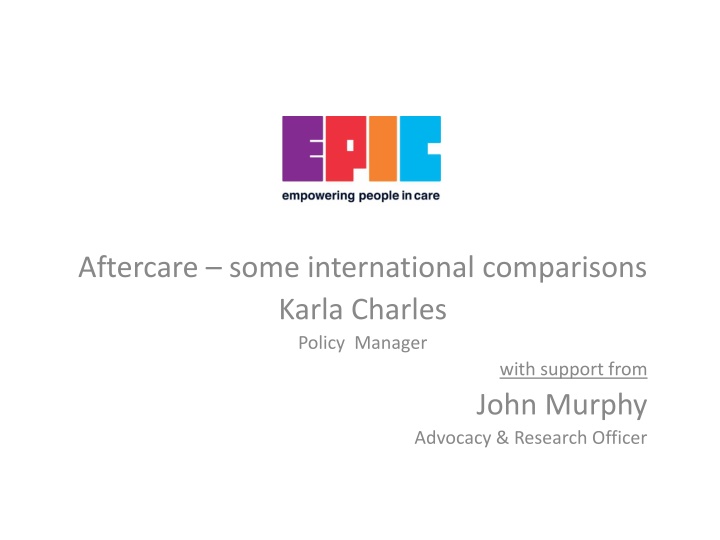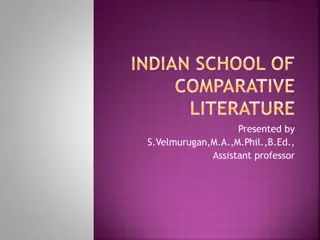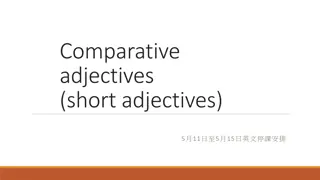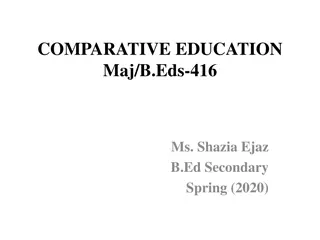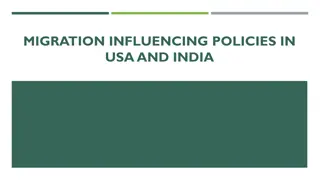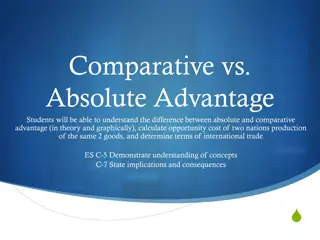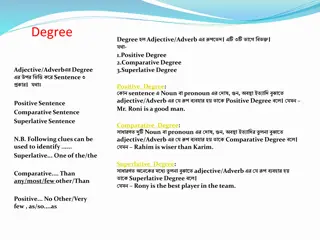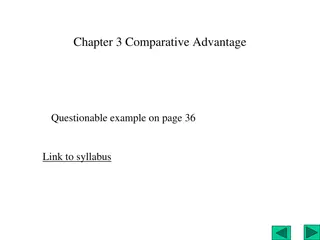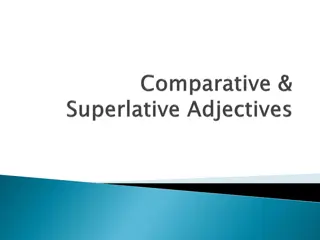International Care Policies: A Comparative Analysis
Explore the differences in aftercare policies for care leavers in Ireland, Scotland, and England. Learn about age limits, support provisions, and societal comparisons to gain insights into creating a world-class care system. Dive into the challenges and successes of each country's approach to supporting young people transitioning from care.
Download Presentation

Please find below an Image/Link to download the presentation.
The content on the website is provided AS IS for your information and personal use only. It may not be sold, licensed, or shared on other websites without obtaining consent from the author.If you encounter any issues during the download, it is possible that the publisher has removed the file from their server.
You are allowed to download the files provided on this website for personal or commercial use, subject to the condition that they are used lawfully. All files are the property of their respective owners.
The content on the website is provided AS IS for your information and personal use only. It may not be sold, licensed, or shared on other websites without obtaining consent from the author.
E N D
Presentation Transcript
Aftercare some international comparisons Karla Charles Policy Manager with support from John Murphy Advocacy & Research Officer
Introduction care population 500 YP leave care in Ireland every year Roughly 15,000 20,000 care leavers in Ireland Who are they? What are they doing? How are they faring? Basic questions we cannot answers We need: Tracking Longitudinal study Data to create a world class system
International Comparisons Ireland Child Care Act 1991 / Child Care (Amendment) Act 2015 Still limited by: May / Shall Available Resources Assessment of Need Interpretation aftercare plan implementation of the plan
International Comparisons (cont.) Scotland Years ahead Vision & by in Nicola Sturgeon: 1stMinister / Chief Mammy Children and Young People (Scotland) Act 2014 Parts 10 & 11 21 years to 26 years Disengaged? Reapply Continuing care graduated transition continuity of relationships Interdependence not independence At a pace suited to each young person not chronological age
International Comparisons (cont.) England Children (Leaving Care) Act 2000 Children and Young Persons Act 2008 Children and Families Act 2014 21 years to 25 years staying put provisions - continuity of care DWP Department of Work and Pension (DWP): marker Semi independent and independent living with flexible support
General Population a comparison In a recent study by Eurostat in 2016, it found that within the European Union, that 28.5% of adults between the ages of 25 to 34 were still living with their parents. The average age of leaving home within the EU is now 26 years old. Below is the average age for the current 28 countries of the EU. Bye bye parents: when do young Europeans flee the nest? Eurostat. https://ec.europa.eu/eurostat/web/products-eurostat-news/-/EDN-20180515- 1?inheritRedirect=true [accessed: 14 November 2018].
Conclusion and key messages: Government funding for Tusla: Budget earmarked aftercare budget Aftercare plan not curtailed by resources postcode lottery Right to appeal a needs assessment Transitions No or limited family supports to fall back on Poor coping mechanisms / poor networks Educational outcomes role models and guidance Tusla can continue progress forward ADEQUATE not good enough
Thanks!! karlacharles@epiconline.ie johnmurphy@epiconline.ie
